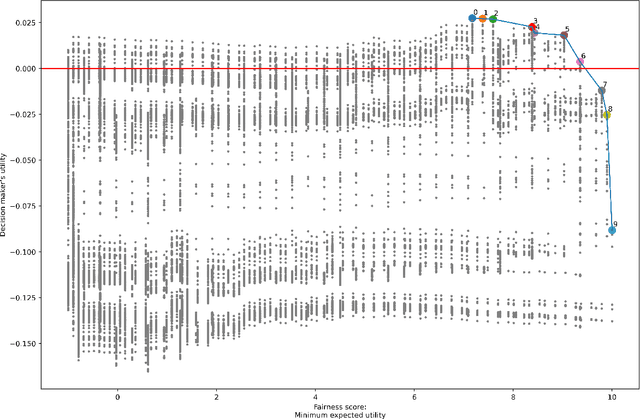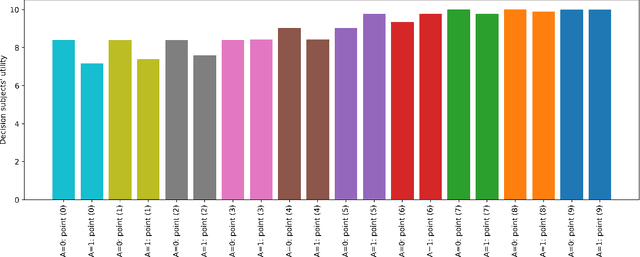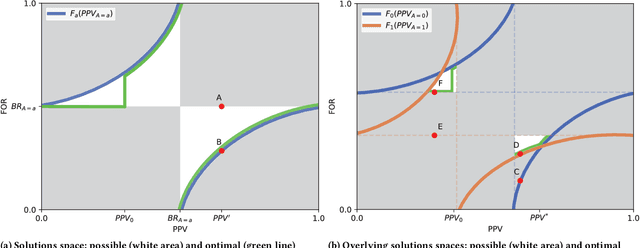Joachim Baumann
Large Language Model Hacking: Quantifying the Hidden Risks of Using LLMs for Text Annotation
Sep 10, 2025Abstract:Large language models (LLMs) are rapidly transforming social science research by enabling the automation of labor-intensive tasks like data annotation and text analysis. However, LLM outputs vary significantly depending on the implementation choices made by researchers (e.g., model selection, prompting strategy, or temperature settings). Such variation can introduce systematic biases and random errors, which propagate to downstream analyses and cause Type I, Type II, Type S, or Type M errors. We call this LLM hacking. We quantify the risk of LLM hacking by replicating 37 data annotation tasks from 21 published social science research studies with 18 different models. Analyzing 13 million LLM labels, we test 2,361 realistic hypotheses to measure how plausible researcher choices affect statistical conclusions. We find incorrect conclusions based on LLM-annotated data in approximately one in three hypotheses for state-of-the-art models, and in half the hypotheses for small language models. While our findings show that higher task performance and better general model capabilities reduce LLM hacking risk, even highly accurate models do not completely eliminate it. The risk of LLM hacking decreases as effect sizes increase, indicating the need for more rigorous verification of findings near significance thresholds. Our extensive analysis of LLM hacking mitigation techniques emphasizes the importance of human annotations in reducing false positive findings and improving model selection. Surprisingly, common regression estimator correction techniques are largely ineffective in reducing LLM hacking risk, as they heavily trade off Type I vs. Type II errors. Beyond accidental errors, we find that intentional LLM hacking is unacceptably simple. With few LLMs and just a handful of prompt paraphrases, anything can be presented as statistically significant.
Preventing Eviction-Caused Homelessness through ML-Informed Distribution of Rental Assistance
Mar 19, 2024



Abstract:Rental assistance programs provide individuals with financial assistance to prevent housing instabilities caused by evictions and avert homelessness. Since these programs operate under resource constraints, they must decide who to prioritize. Typically, funding is distributed by a reactive or first-come-first serve allocation process that does not systematically consider risk of future homelessness. We partnered with Allegheny County, PA to explore a proactive allocation approach that prioritizes individuals facing eviction based on their risk of future homelessness. Our ML system that uses state and county administrative data to accurately identify individuals in need of support outperforms simpler prioritization approaches by at least 20% while being fair and equitable across race and gender. Furthermore, our approach would identify 28% of individuals who are overlooked by the current process and end up homeless. Beyond improvements to the rental assistance program in Allegheny County, this study can inform the development of evidence-based decision support tools in similar contexts, including lessons about data needs, model design, evaluation, and field validation.
On Prediction-Modelers and Decision-Makers: Why Fairness Requires More Than a Fair Prediction Model
Oct 09, 2023Abstract:An implicit ambiguity in the field of prediction-based decision-making regards the relation between the concepts of prediction and decision. Much of the literature in the field tends to blur the boundaries between the two concepts and often simply speaks of 'fair prediction.' In this paper, we point out that a differentiation of these concepts is helpful when implementing algorithmic fairness. Even if fairness properties are related to the features of the used prediction model, what is more properly called 'fair' or 'unfair' is a decision system, not a prediction model. This is because fairness is about the consequences on human lives, created by a decision, not by a prediction. We clarify the distinction between the concepts of prediction and decision and show the different ways in which these two elements influence the final fairness properties of a prediction-based decision system. In addition to exploring this relationship conceptually and practically, we propose a framework that enables a better understanding and reasoning of the conceptual logic of creating fairness in prediction-based decision-making. In our framework, we specify different roles, namely the 'prediction-modeler' and the 'decision-maker,' and the information required from each of them for being able to implement fairness of the system. Our framework allows for deriving distinct responsibilities for both roles and discussing some insights related to ethical and legal requirements. Our contribution is twofold. First, we shift the focus from abstract algorithmic fairness to context-dependent decision-making, recognizing diverse actors with unique objectives and independent actions. Second, we provide a conceptual framework that can help structure prediction-based decision problems with respect to fairness issues, identify responsibilities, and implement fairness governance mechanisms in real-world scenarios.
A Classification of Feedback Loops and Their Relation to Biases in Automated Decision-Making Systems
May 10, 2023Abstract:Prediction-based decision-making systems are becoming increasingly prevalent in various domains. Previous studies have demonstrated that such systems are vulnerable to runaway feedback loops, e.g., when police are repeatedly sent back to the same neighborhoods regardless of the actual rate of criminal activity, which exacerbate existing biases. In practice, the automated decisions have dynamic feedback effects on the system itself that can perpetuate over time, making it difficult for short-sighted design choices to control the system's evolution. While researchers started proposing longer-term solutions to prevent adverse outcomes (such as bias towards certain groups), these interventions largely depend on ad hoc modeling assumptions and a rigorous theoretical understanding of the feedback dynamics in ML-based decision-making systems is currently missing. In this paper, we use the language of dynamical systems theory, a branch of applied mathematics that deals with the analysis of the interconnection of systems with dynamic behaviors, to rigorously classify the different types of feedback loops in the ML-based decision-making pipeline. By reviewing existing scholarly work, we show that this classification covers many examples discussed in the algorithmic fairness community, thereby providing a unifying and principled framework to study feedback loops. By qualitative analysis, and through a simulation example of recommender systems, we show which specific types of ML biases are affected by each type of feedback loop. We find that the existence of feedback loops in the ML-based decision-making pipeline can perpetuate, reinforce, or even reduce ML biases.
Group Fairness in Prediction-Based Decision Making: From Moral Assessment to Implementation
Oct 19, 2022


Abstract:Ensuring fairness of prediction-based decision making is based on statistical group fairness criteria. Which one of these criteria is the morally most appropriate one depends on the context, and its choice requires an ethical analysis. In this paper, we present a step-by-step procedure integrating three elements: (a) a framework for the moral assessment of what fairness means in a given context, based on the recently proposed general principle of "Fair equality of chances" (FEC) (b) a mapping of the assessment's results to established statistical group fairness criteria, and (c) a method for integrating the thus-defined fairness into optimal decision making. As a second contribution, we show new applications of the FEC principle and show that, with this extension, the FEC framework covers all types of group fairness criteria: independence, separation, and sufficiency. Third, we introduce an extended version of the FEC principle, which additionally allows accounting for morally irrelevant elements of the fairness assessment and links to well-known relaxations of the fairness criteria. This paper presents a framework to develop fair decision systems in a conceptually sound way, combining the moral and the computational elements of fair prediction-based decision-making in an integrated approach. Data and code to reproduce our results are available at https://github.com/joebaumann/fair-prediction-based-decision-making.
* Accepted full paper at SDS2022, the 9th Swiss Conference on Data Science, code available on GitHub: https://github.com/joebaumann/fair-prediction-based-decision-making
Distributive Justice as the Foundational Premise of Fair ML: Unification, Extension, and Interpretation of Group Fairness Metrics
Jun 06, 2022

Abstract:Group fairness metrics are an established way of assessing the fairness of prediction-based decision-making systems. However, these metrics are still insufficiently linked to philosophical theories, and their moral meaning is often unclear. We propose a general framework for analyzing the fairness of decision systems based on theories of distributive justice, encompassing different established ``patterns of justice'' that correspond to different normative positions. We show that the most popular group fairness metrics can be interpreted as special cases of our approach. Thus, we provide a unifying and interpretative framework for group fairness metrics that reveals the normative choices associated with each of them and that allows understanding their moral substance. At the same time, we provide an extension of the space of possible fairness metrics beyond the ones currently discussed in the fair ML literature. Our framework also allows overcoming several limitations of group fairness metrics that have been criticized in the literature, most notably (1) that they are parity-based, i.e., that they demand some form of equality between groups, which may sometimes be harmful to marginalized groups, (2) that they only compare decisions across groups, but not the resulting consequences for these groups, and (3) that the full breadth of the distributive justice literature is not sufficiently represented.
A Justice-Based Framework for the Analysis of Algorithmic Fairness-Utility Trade-Offs
Jun 06, 2022

Abstract:In prediction-based decision-making systems, different perspectives can be at odds: The short-term business goals of the decision makers are often in conflict with the decision subjects' wish to be treated fairly. Balancing these two perspectives is a question of values. We provide a framework to make these value-laden choices clearly visible. For this, we assume that we are given a trained model and want to find decision rules that balance the perspective of the decision maker and of the decision subjects. We provide an approach to formalize both perspectives, i.e., to assess the utility of the decision maker and the fairness towards the decision subjects. In both cases, the idea is to elicit values from decision makers and decision subjects that are then turned into something measurable. For the fairness evaluation, we build on the literature on welfare-based fairness and ask what a fair distribution of utility (or welfare) looks like. In this step, we build on well-known theories of distributive justice. This allows us to derive a fairness score that we then compare to the decision maker's utility for many different decision rules. This way, we provide an approach for balancing the utility of the decision maker and the fairness towards the decision subjects for a prediction-based decision-making system.
Enforcing Group Fairness in Algorithmic Decision Making: Utility Maximization Under Sufficiency
Jun 05, 2022



Abstract:Binary decision making classifiers are not fair by default. Fairness requirements are an additional element to the decision making rationale, which is typically driven by maximizing some utility function. In that sense, algorithmic fairness can be formulated as a constrained optimization problem. This paper contributes to the discussion on how to implement fairness, focusing on the fairness concepts of positive predictive value (PPV) parity, false omission rate (FOR) parity, and sufficiency (which combines the former two). We show that group-specific threshold rules are optimal for PPV parity and FOR parity, similar to well-known results for other group fairness criteria. However, depending on the underlying population distributions and the utility function, we find that sometimes an upper-bound threshold rule for one group is optimal: utility maximization under PPV parity (or FOR parity) might thus lead to selecting the individuals with the smallest utility for one group, instead of selecting the most promising individuals. This result is counter-intuitive and in contrast to the analogous solutions for statistical parity and equality of opportunity. We also provide a solution for the optimal decision rules satisfying the fairness constraint sufficiency. We show that more complex decision rules are required and that this leads to within-group unfairness for all but one of the groups. We illustrate our findings based on simulated and real data.
 Add to Chrome
Add to Chrome Add to Firefox
Add to Firefox Add to Edge
Add to Edge